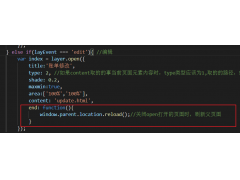How to convert bottom-up recursive algorithm to iterative stack in JavaScript(如何在 JavaScript 中将自下而上的递归算法转换为迭代堆栈)
问题描述
给定以下算法:
console.log(JSON.stringify(create(0), null, 2))
function create(i) {
if (i == 5) return
return new Klass(i, create(i + 1), create(i + 1))
}
function Klass(i, l, r) {
this.i = i
this.l = l
this.r = r
}它在create(0) last中创建Klass,递归地创建所有的孩子.所以它首先创建叶节点,然后将其传递给父节点,等等.
It creates the Klass in create(0) last, after creating all the children, recursively. So it creates the leaf nodes first, then passes that up to the parent, etc.
想知道如何使用没有递归的堆栈来做到这一点.让我头疼:).我了解如何使用堆栈从自上而下创建,而不是自下而上.对于自上而下,本质上是这样的:
Wondering how to do this using a stack without recursion. Making my head hurt :). I understand how to use a stack to create from the top-down, but not the bottom up. For top-down, it's essentially this:
var stack = [0]
while (stack.length) {
var i = stack.pop()
// do work
stack.push(children)
}
自下而上,我看不出它应该如何工作.这就是我卡住的地方:
From the bottom up, I can't see how it should work. This is where I get stuck:
function create(i) {
var stack = []
stack.push([i, 'open'])
stack.push([i, 'close'])
while (stack.length) {
var node = stack.pop()
if (node[1] == 'open') {
stack.push([ node[0] + 1, 'open' ])
stack.push([ node[0] + 1, 'close' ])
} else {
// ?? not sure how to get to this point
var klass = new Klass(node[0], node[2], node[3])
// ??
}
}
}
推荐答案
将任何递归代码机械地转换为堆栈机器并非易事.自动状态转换会产生非常复杂的代码,想想 C#-s 或 BabelJS-s 生成器.但可以肯定的是,它可以完成,但您将需要可变堆栈帧和/或寄存器.让我们看看我们面临的问题:
It's not trivial to mechanically transform any recursive code into a stack machine. Automatic stateful transformations produce very complex code, just think of C#-s or BabelJS-s generators. But sure, it can be done, but you will need mutable stackframes and/or registers. Let's see the problems we are facing:
我们必须在堆栈本身上存储一些状态变量/指令指针.这就是您使用 "open" 和 "close" 标记模拟的内容.
We have to store some state variable/instruction pointer on the stack itself. This is what you are emulating with the "open" and "close" markers.
有很多方法:
- 将其存储在临时寄存器中
- 向函数传递对字段的引用((对象,字段名)对),模拟
out参数 - 像@CtheSky 那样使用第二个堆栈
使用可变堆栈帧和结果寄存器,转换后的代码如下所示:
Using mutable stack frames and a result register the transformed code would look something like this:
console.log(JSON.stringify(create(0), null, 2))
function Klass(i, l, r) {
this.i = i
this.l = l
this.r = r
}
function Frame(i) {
this.ip = 0;
this.i = i;
this.left = null;
}
function create(i) {
var result;
var stack = [new Frame(i)];
while (stack.length > 0) {
var frame = stack[stack.length - 1];
switch (frame.ip) {
case 0:
if (frame.i === 5) {
result = undefined;
stack.pop();
break;
}
stack.push(new Frame(frame.i + 1));
frame.ip = 1;
break;
case 1:
frame.left = result;
stack.push(new Frame(frame.i + 1));
frame.ip = 2;
break;
case 2:
result = new Klass(frame.i, frame.left, result);
stack.pop();
break;
}
}
return result;
}这篇关于如何在 JavaScript 中将自下而上的递归算法转换为迭代堆栈的文章就介绍到这了,希望我们推荐的答案对大家有所帮助,也希望大家多多支持编程学习网!
本文标题为:如何在 JavaScript 中将自下而上的递归算法转换为迭代堆栈


- 为什么我的页面无法在 Github 上加载? 2022-01-01
- 如何向 ipc 渲染器发送添加回调 2022-01-01
- 在不使用循环的情况下查找数字数组中的一项 2022-01-01
- 我不能使用 json 使用 react 向我的 web api 发出 Post 请求 2022-01-01
- 如何显示带有换行符的文本标签? 2022-01-01
- 如何调试 CSS/Javascript 悬停问题 2022-01-01
- 为什么悬停在委托事件处理程序中不起作用? 2022-01-01
- 从原点悬停时触发 translateY() 2022-01-01
- 使用 iframe URL 的 jQuery UI 对话框 2022-01-01
- 是否可以将标志传递给 Gulp 以使其以不同的方式 2022-01-01









